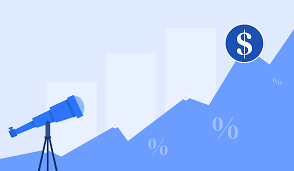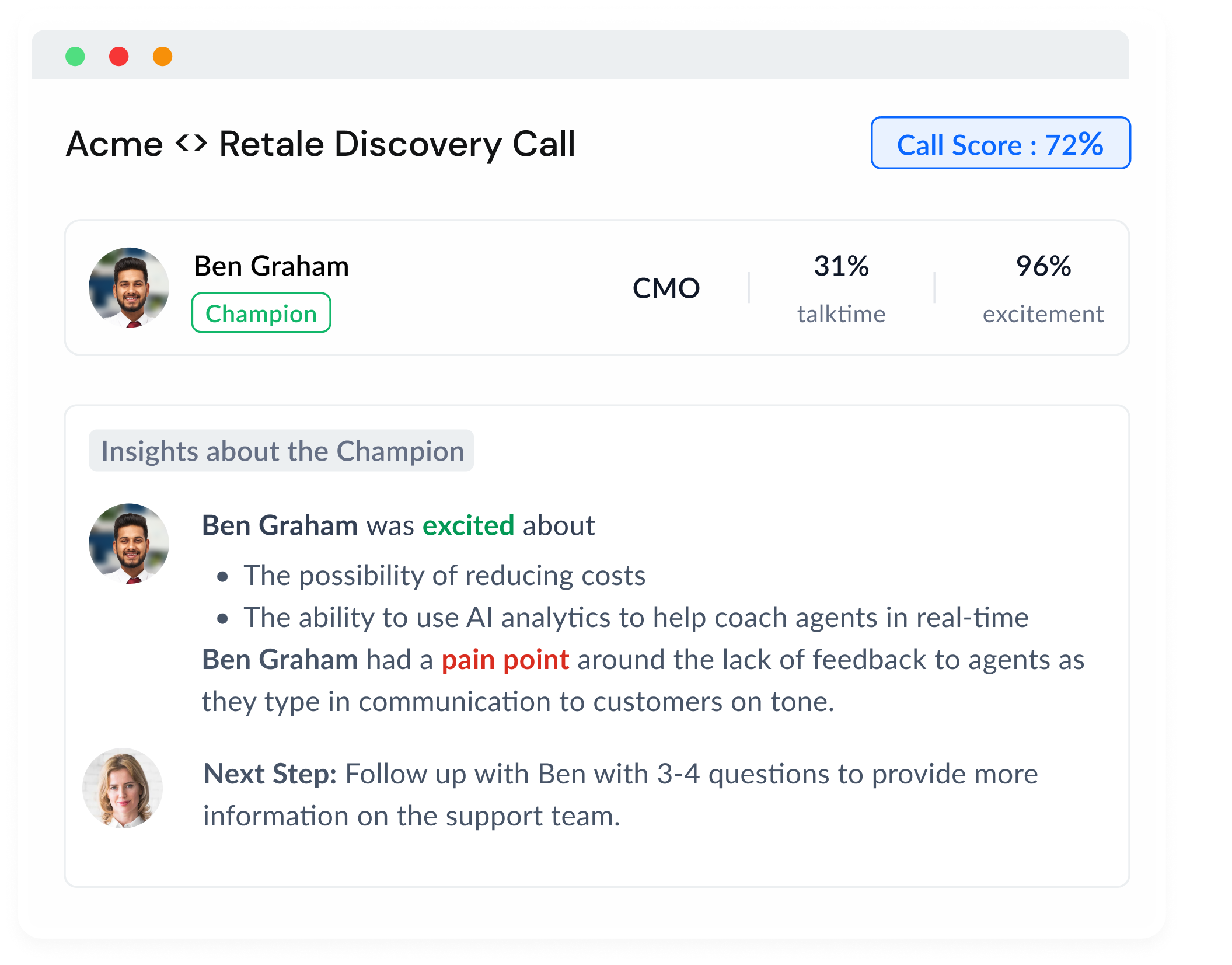As a sales leader in today's fast-paced, high-stakes SaaS landscape, you know that sales forecasting is more important than ever. You also know that the game has changed, and traditional forecasting methods aren't cutting it anymore.
Enter the world of AI-powered sales forecasting, where cutting-edge tools and CRM integrations are leveling up sales strategies and setting teams on the path to success.
In this article, we'll dive deep into the groundbreaking world of AI-driven sales forecasting, explore its potential to transform the way you understand sales communication and deal closure probabilities and discuss how it can empower you to lead your team to outperform and advance your career.
The AI-Driven Sales Forecasting Revolution
Sales forecasting has long been a challenging and time-consuming aspect of sales management. But the emergence of AI technology is rewriting the rules, providing sales leaders with a powerful new way to predict and influence the future.
The current state of AI-based sales forecasting
The last few years have seen the development of AI-based sales forecasting tools like Ebsta and Clari, which have started to change the game. These tools leverage AI algorithms to analyze sales data and provide more accurate forecasts than traditional methods.
However, there's still so much untapped potential in AI-driven sales forecasting. Imagine going beyond activity-based metrics like the number of touchpoints, dials, etc., and using AI to read and understand not just the quantity but also the quality of all email, text, LinkedIn, and Slack communication.
Don’t get me wrong - quantity is important, and more touchpoints and more prospect reciprocity do improve the chances of deal closure. But grasping the level of qualification, the strength of buying intent, and the latent opinions and objectives are much more important, and requires nuanced human judgment (which is what distinguishes elite reps from everyone else).
Deciphering emotions and buying intent from video and audio calls, and using these signals to determine the probability of closing deals on a deal-by-deal basis vastly improves this shortcoming of current tools, and a new set of game-changing AI sales forecasting techniques, frameworks, and tools are emerging right as we speak.
Going beyond traditional forecasting methods with advanced AI tools
This is where the real magic of AI-powered sales forecasting comes into play. By integrating with CRM systems and using generative AI technology like ChatGPT, you can build an AI agent that acts as the central nervous system of your sales team, providing insights and forecasts that were previously unimaginable.
This system understands all types of communication between the seller and the buyer - verbal and non-verbal, across modalities like Zoom calls, phone calls, emails, LinkedIn messages, Slack texts, text messages, and more. It figures out the underlying sentiment, blockers, authority or lack thereof, price sensitivity, and scores all your team’s deals on your preferred sales methodology, eg. MEDDPICC, and gives you an accurate, real-time, ever-evolving forecast of your quarter.
This is happening right now. The sales forecasting world is changing. FAST.
Leveraging AI to Understand Sales Communication
So, how exactly does AI-powered sales forecasting tap into the wealth of data hidden in your sales communications? Let's explore some of the key ways AI can help you better understand and predict the outcomes of ongoing deals.
Deciphering emotions and buying intent across email, text, LinkedIn, and Slack
One of the most impressive feats of AI is its ability to analyze vast amounts of written communication and extract valuable insights. By using AI to process and understand all of the email, text, LinkedIn, and Slack communication between your team and your prospects, you can get a clearer picture of the emotions and intentions driving the deal.
For example, AI algorithms can identify patterns in language and sentiment, helping you pinpoint the moments when a prospect becomes excited or when they start to disengage. This knowledge can prove invaluable when it comes to guiding your team's sales efforts and refining your sales strategy.
Analyzing video and audio calls for deeper insights with AI
The power of AI doesn't stop at written communication. By using advanced technology like Behavior AI, AI can also analyze video and audio calls to reveal even deeper insights. This could involve reading prospect non-verbal cues from their video feed and mapping them to the conversation to surface insights about what got them excited and what turned them off.
Sybill does this and much more. It tracks prospect body language and facial expressions, matches their levels of engagement and excitement to the conversation context, and surfaces insights about their interests and points of skepticism using a proprietary Behavior AI system.
The benefits of using AI to assess deal closure probability
By harnessing AI to analyze and understand all of your sales communication, you can build a more accurate and detailed picture of each deal's likelihood of closing. Armed with this knowledge, you can guide your team's efforts more effectively, allocate resources more efficiently, and make more informed decisions that ultimately lead to higher revenue and better forecasting.
Unleashing the Power of Deal-by-Deal Sales Forecasting
With the ability to analyze sales communication in such depth, AI-powered sales forecasting can take your forecasting game to the next level. Let's explore some of the key benefits of leveraging AI for deal-by-deal sales forecasting.
More accurate sales forecasts from the get-go
By using AI to assess the probability of closing each deal based on a wealth of data from various communication channels, you can create more accurate sales forecasts from the beginning. This level of accuracy helps you make better-informed decisions, which ultimately leads to improved sales performance.
You don’t need years of a company’s deal data to start to learn patterns - you need a small dataset to get started, and the AI can learn along the way as it sees more data points.
Dynamic, data-driven sales forecasts that adapt over time
As your organization's sales activities and outcomes evolve, your AI-driven sales forecasting system can adapt and learn from the new data. This allows your forecasts to become increasingly accurate over time, giving you even more confidence in your decision-making process.
Empowering sales teams to hit their quotas and exceed expectations
Armed with more accurate sales forecasts, you can better support your sales team in hitting their quotas and exceeding expectations. By understanding which deals are most likely to close and which need extra attention, you can guide your team's efforts and help them focus on the most promising opportunities.
The Impact on Sales Leadership and Career Advancement
As a sales leader, embracing AI-driven sales forecasting can have a profound impact on your career trajectory. Here's how:
Gaining recognition for accurate forecasting and hitting quotas
By using AI to improve your sales forecasting and guide your team to hit their quotas consistently, you'll gain recognition and credibility within your organization. Accurate forecasting and strong sales performance are key indicators of a successful sales leader, which can lead to career advancement opportunities.
Positioning yourself as a forward-thinking leader
By adopting AI-powered sales forecasting tools, you demonstrate your commitment to staying on the cutting edge of sales technology and management practices. This positions you as a forward-thinking sales leader who understands the value of leveraging new technology to drive success.
Boosting team morale and retention
When your sales team sees the positive impact of AI-driven forecasting on their performance and quota attainment, it can lead to higher morale and increased job satisfaction. In turn, this can lead to higher retention rates among your top performers, further solidifying your reputation as a successful sales leader.

Conclusion
In a world where traditional sales forecasting methods are becoming increasingly obsolete, AI-driven sales forecasting offers sales leaders the opportunity to revolutionize their sales strategies and drive unparalleled success. By embracing AI technology, you can tap into previously untapped data sources, gain deeper insights into your sales communication and deal closure probabilities, and empower your sales team to hit their quotas and exceed expectations. Don't miss out on the future of sales forecasting – join the AI revolution today!















.png)





